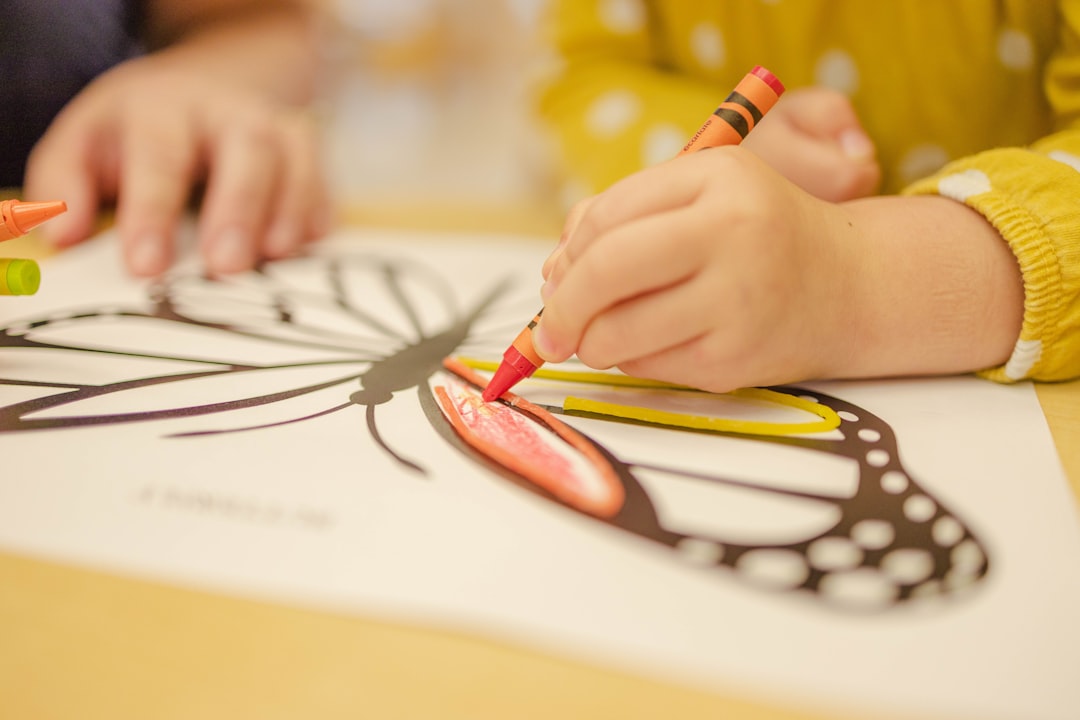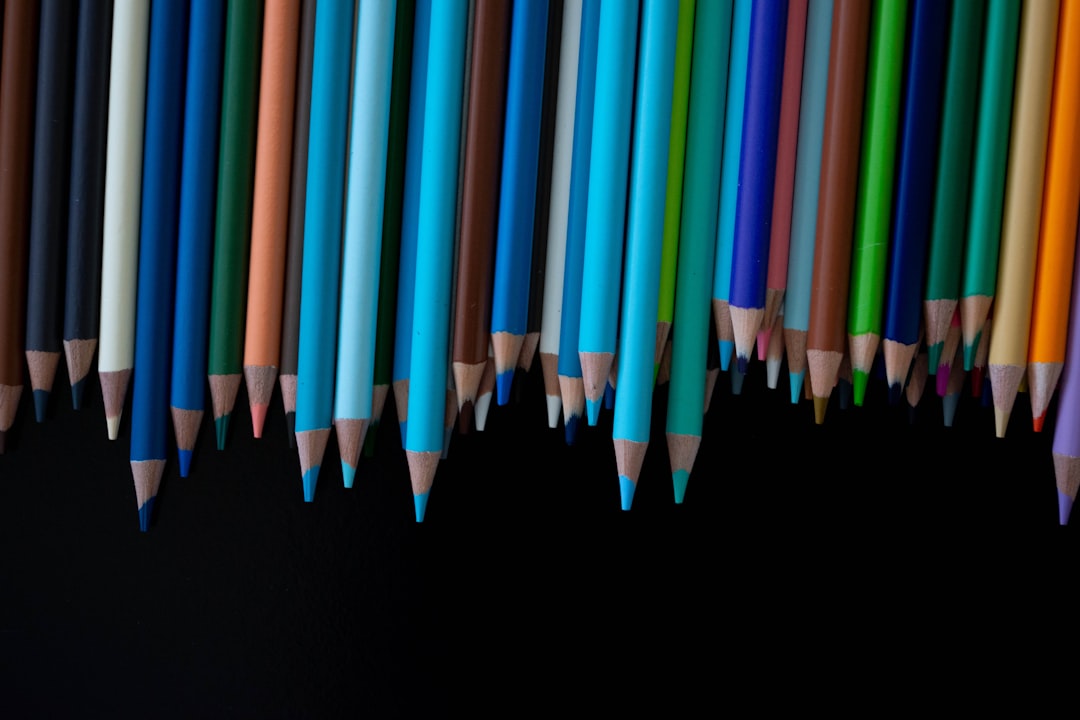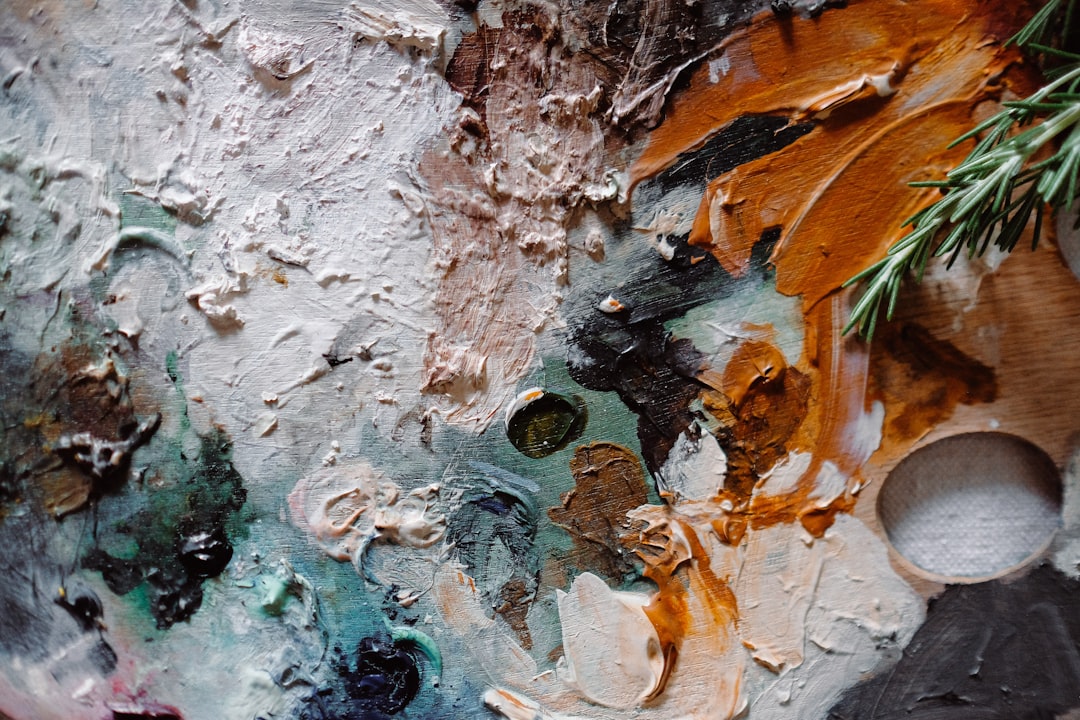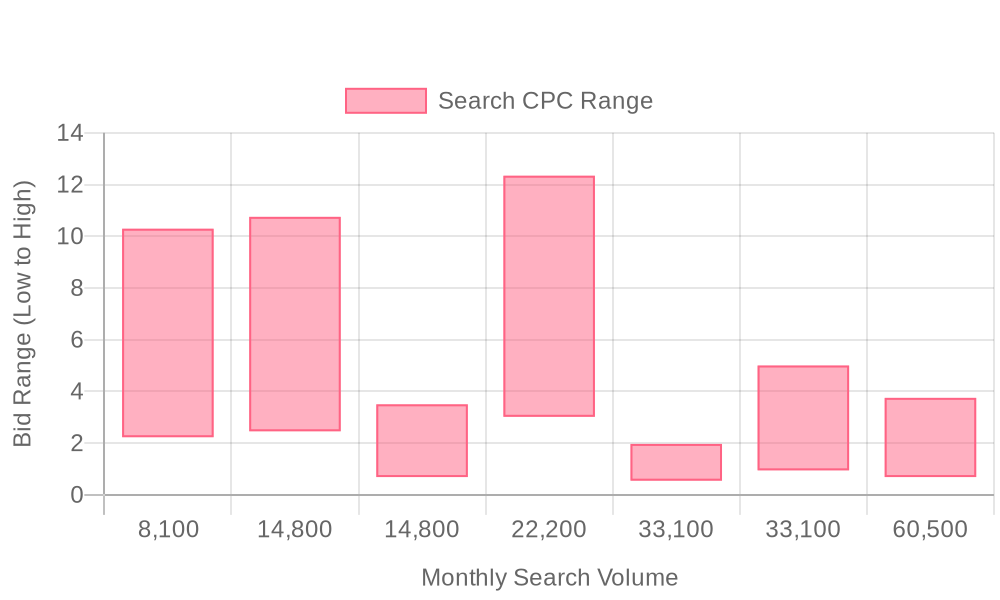
Supercharge your lead generation with a FREE Google Ads audit - no strings attached! See how you can generate more and higher quality leads
Get My Free Google Ads AuditFree consultation

No commitment
Supercharge your lead generation with a FREE LinkedIn Ads audit - no strings attached! See how you can generate more and higher quality leads
Get My Free Google Ads AuditFree consultation

No commitment
Supercharge your lead generation with a FREE Meta Ads audit - no strings attached! See how you can generate more and higher quality leads
Get My Free Google Ads AuditGet My Free LinkedIn Ads AuditGet My Free Meta Ads AuditFree consultation

No commitment
Supercharge your lead generation with a FREE Google Ads audit - no strings attached! See how you can generate more and higher quality leads
Get My Free Google Ads AuditFree consultation

No commitment
In today's dynamic educational landscape, art schools face increasing challenges in attracting potential students amidst growing competition. Missing high-value prospects due to them not being tracked can lead to lost opportunities, affecting enrollment numbers. The demand for a strategic digital approach is paramount, and modern solutions, like Google Ads, can help address this by connecting art schools with prospective students actively searching for programs. By leveraging the power of Google Ads, art schools can effectively promote their unique programs, intercept potential students at the precise moment of interest, and measure ROI comprehensively from click to enrollment. This playbook provides art schools with the necessary framework to integrate Google Ads into their marketing strategies, creating an impactful and measurable advertising campaign.

Art schools face increasing pressure to attract and convert high-quality applicants in a competitive education market. Leveraging Google Ads for art schools means aligning digital advertising investments with the specific behaviors and enrollment cycles of prospective art students, ensuring every dollar spent is directly tied to measurable engagement and lead generation.
A sophisticated, data-driven Google Ads strategy can transform the traditional art school marketing funnel. By precisely identifying who is visiting program pages and understanding real-time intent signals, marketers can boost both application volume and lead quality while minimizing wasted spend.

Art schools operate in a landscape where student intent and program differentiation drive enrollment outcomes. Digital advertising for art schools, particularly through Google Ads, empowers marketers to identify and engage individuals actively seeking creative education, increasing the likelihood of connecting with applicants who are ready to take the next step. For practical steps on setting up campaigns, explore this guide on Google Ads for art schools.
The precision of Google Ads targeting transforms how art institutions approach audience building. Schools can reach students researching specific art programs, using intent signals to prioritize those most likely to convert. By enriching audience profiles with high-fit attributes, marketing teams can promote high-margin or newly launched courses directly to the most relevant prospects.
Campaign agility is critical for art school marketing. With Google Ads, teams can rapidly respond to seasonal enrollment peaks or new program launches, adjusting spend in real time as application trends shift. Sona’s audience enrichment further enhances this agility: as in-market behaviors are detected, budgets and messaging are dynamically adjusted to prioritize high-converting leads, ensuring resources are always focused on those most likely to enroll.
Expanding reach into new demographic and geographic segments is essential for sustainable art school enrollment growth. By mapping interest stages and syncing enriched audiences from CRM or web activity directly into Google Ads, teams can target students across regions and intent levels. This unified approach to art institution advertising not only broadens visibility but also creates a more personalized and effective student acquisition funnel. If you’re ready to modernize your enrollment strategy, get started for free with Sona to see how advanced audience targeting can drive your next admissions cycle.

Identifying new avenues for growth in art school marketing requires a departure from generic, one-size-fits-all campaigns. Success hinges on pinpointing exactly where your institution can outperform competitors through tailored Google Ads strategies for education and art school enrollment. Leverage unified campaign data to identify creative angles and audience segments that your competitors may be overlooking, so you can craft messaging that resonates directly with motivated prospects and drive more qualified inquiries.
Growth in art school marketing lies in the ability to unify data, act on granular insights, and deliver messaging relevant to every stage of the student journey. If you want to drive more qualified leads and optimize your ad spend, get started for free with Sona to see how unified data and smart segmentation can transform your campaigns.

Precise audience segmentation empowers art schools to maximize every marketing dollar, ensuring promotional efforts reach the most relevant prospects at the right moments. Segmenting by student type—such as undergraduates, postgraduates, or professional artists—enables teams to avoid generic outreach and instead deliver targeted messaging that resonates with each group’s unique aspirations and decision timelines. Explore actionable frameworks for increasing conversions by segmenting prospects based on buying stage.
In digital advertising for art schools, leveraging intent signals like program interests, inquiry dates, and application cycles provides a deeper layer of intelligence. By assigning scores based on real-time actions—such as downloading a portfolio guide or returning to a degree page—marketing teams can prioritize prospects who are further along the enrollment journey. This intent-driven approach allows budgets to shift dynamically toward high-converting audiences, improving both efficiency and enrollment outcomes. For a step-by-step overview of how art schools can launch and manage Google Ads campaigns, see this practical guide.
Building highly targeted ad groups for Google Ads for art programs ensures messaging consistency across channels. For instance, a campaign promoting a summer intensive should only reach recent high school graduates interested in short-term programs, while MFA ads target working artists seeking career advancement. When these audiences update in real time as leads progress through the funnel, marketers can build real-time, signal-based segments that sync directly into Google Ads and connected CRMs. If you’re ready to put segmentation into action, you can get started for free with Sona to experience dynamic audience management firsthand.

| Industry | Keyword | Monthly Search Volume | Competition Level | Low Bid | High Bid |
| Art Schools | art colleges | 8100 | LOW | 2.23 | 10.29 |
| Art Schools | art schools near me | 14800 | LOW | 2.46 | 10.75 |
| Art Schools | drawing classes near me | 14800 | LOW | 0.69 | 3.5 |
| Art Schools | art schools | 22200 | LOW | 3.02 | 12.34 |
| Art Schools | painting classes near me | 33100 | LOW | 0.55 | 1.97 |
| Art Schools | art classes | 33100 | LOW | 0.95 | 5 |
| Art Schools | art classes near me | 60500 | LOW | 0.69 | 3.75 |
Art schools achieve stronger marketing ROI when campaigns are anchored in precise, high-intent keywords relevant to both their unique programs and the student enrollment journey. A strategic keyword approach ensures budgets are invested in audiences actively seeking art education, reducing wasted spend and elevating conversion rates for admissions teams. To further refine your targeting, leverage real-time audience segmentation for hyper-personalized outreach.
Identifying core search terms requires mapping the language prospective students use as they research programs, admissions options, and specific artistic disciplines. For example, targeting "fine arts degree enrollment," "ceramic art certificate," and "digital illustration classes near me" captures a spectrum of intent, from general interest to program-specific applications. Incorporating "Google Ads for Art Schools" and "art school online marketing" into campaigns helps intercept users further down the decision funnel; see this step-by-step guide for art schools to optimize campaign setup.
Long-tail keywords are essential for reaching niche audiences that generic, broad-match terms often miss. Queries like "apply to accredited sculpture MFA program" or "portfolio review for art school admissions" attract students with clear, actionable goals, reducing irrelevant clicks and driving higher-quality leads. Optimizing for these terms also helps art schools stand out in competitive digital advertising for art schools, where larger institutions may dominate traditional search volume.
Bidding strategies should focus on terms that show consistently high engagement and conversion potential. By analyzing which keywords drive not just traffic but also actual applications or campus tour signups, marketing teams can shift budgets toward the most productive segments. Advanced solutions enable real-time intent tracking and dynamic audience updates, ensuring that as leads progress through research, inquiry, and application phases, ad spend remains concentrated on the most conversion-ready prospects. When integrated with unified data platforms, every high-performing keyword can trigger CRM enrichment, instant audience sync, and immediate retargeting, allowing for a seamless handoff between digital touchpoints and admissions follow-up.
Sample target terms for Google Ads campaign for art schools include:
This keyword strategy positions art schools to engage ideal candidates, optimize ad spend, and ensure that every click has the potential to convert into a qualified applicant. To take the next step, you can get started for free with Sona and maximize your digital marketing results.

Effective Google Ads for art schools campaigns start by clustering keywords according to specific art disciplines and program offerings. Segmenting terms like "fine arts degree," "digital illustration course," and "sculpture workshops" allows marketing teams to match ad groups precisely to student interests and intent. Localizing keyword lists with city or regional descriptors, for example, "photography classes in Chicago" or "animation school Los Angeles," helps campaigns capture high-intent searches from prospective students in relevant geographies. This targeted approach not only improves ad relevance but also increases the likelihood of reaching applicants who are most likely to enroll. To explore practical tactics for campaign setup and keyword clustering, see this step-by-step guide for art schools.
Integrating visitor identification platforms enables teams to move beyond broad targeting and identify actual visitors engaging with program content. With real-time insight into which companies and individuals are researching specific art programs, marketers can dynamically prioritize budget toward the highest-converting audiences. As prospects progress through the funnel, enriched audience segments can be updated and synced directly into Google Ads, ensuring that spend is focused on nurturing leads with demonstrated interest in art education.
Crafting ad copy that highlights what makes each program unique is essential for standing out in a crowded education market. Emphasize distinctive features such as renowned faculty, specialized studio access, or exclusive scholarships to encourage engagement. For example, messaging like "Portfolio-based admission, scholarships available" or "Learn 3D animation from industry professionals" speaks directly to the aspirations of creative applicants and differentiates from generic offerings. For more inspiration on messaging and positioning, explore this collection of Google Ads examples.
Ad extensions play a critical role in providing additional touchpoints and information. Including sitelinks to campus tour sign-ups, callout extensions for financial aid, and structured snippets for curriculum highlights improves both visibility and user engagement. When ad copy and extensions are informed by real-time intent signals, marketers can adapt messaging to reflect the immediate needs and interests of high-intent prospects, maximizing click-through rates and lead quality.
A seamless transition from ad click to landing page content is vital to minimizing drop-off and maintaining prospective student interest. Landing pages should be tightly aligned with the ad’s promise, focusing on clear calls to action such as "Request Info," "Book a Portfolio Review," or "Start Your Application." By segmenting landing pages for each discipline, art schools ensure that visitors immediately find content relevant to their search intent, which increases conversion rates. To see how successful institutions build trust with prospects, browse university Google Ads case studies.
Social proof, such as testimonials and case studies from successful alumni, builds trust and credibility. Featuring graduate stories and visual examples of student work helps prospective students envision their own success and strengthens the case for enrollment. When enriched visitor data informs which testimonials or stories to showcase, art schools can personalize landing experiences for different audience segments, resulting in higher engagement and application completion rates. To learn more about measuring the impact of personalized campaigns, visit our marketing analytics blog.
Ongoing campaign success depends on robust tracking and analytics to inform every strategic adjustment. Implement advanced conversion tracking to capture both online and offline actions—such as form submissions, event registrations, or completed applications—so teams can attribute enrollments to specific ads and keywords. This data-driven approach allows for precise budget allocation, ensuring resources are directed toward the highest-performing channels and audience segments. For additional insights into foundational Google Ads analytics, review this Google Ads PDF guide for education.
Campaigns should be iteratively refined based on conversion data, click-through rates, and cost metrics. Real-time audience data enables marketing teams to shift spend quickly to capitalize on emerging opportunities, while CRM and ad sync ensure that newly identified leads are automatically updated in both Google Ads and downstream platforms. By unifying campaign data and lead information, art schools create a continuous optimization loop that maximizes efficiency and delivers measurable growth in application volume and enrollment quality. If you’re ready to streamline your student recruitment, get started for free with Sona and explore seamless campaign optimization.
Video content elevates the visibility of art schools by capturing the vibrancy of workshops, exhibitions, and student showcases. Prospective students engage more when they experience the creative environment and see real outcomes in motion, making video an essential for digital advertising for art schools.
Partnering with alumni for story-driven campaigns brings authentic voices to your Google Ads strategies for education. Graduates’ unique journeys and achievements provide social proof, boosting trust and inspiring new applicants to see tangible pathways after graduation. For more insights on leveraging alumni success and campaign strategy, explore our blog on marketing analytics.
Localization refines art school online marketing by tailoring campaigns to the distinct interests and sensibilities of regional art communities. Using hyper-local targeting within Google Ads for Art Schools ensures your message resonates with nearby prospects, and leveraging CRM integrations keeps audience segments updated as interest shifts within local networks.
Incorporating advanced visitor identification into your art institution advertising uncovers which companies and individuals are engaging with your content, allowing for precise retargeting. When you sync enriched audience insights into platforms like Google Ads, you can dynamically allocate budget to students and organizations most likely to convert, optimizing ROI across every campaign.
A unified approach to tracking—bridging online actions with offline outcomes like campus visits or portfolio submissions—provides an accurate view of what drives art school enrollment. By integrating real-time intent data, marketing teams can identify prospects showing immediate interest in programs and push timely, personalized messaging that accelerates the decision-making process. To see how this works for your institution, get started for free with Sona.
Leveraging Google Ads effectively can transform how art schools attract and engage potential students, ensuring they stand out in a competitive market. By strategically utilizing this powerful tool, art institutions can significantly enhance their online presence and reach their target audience more efficiently.
Throughout this article, we've explored the key challenges art schools face in digital advertising, such as budget constraints and targeting the right audience. We've discussed practical solutions, including optimizing ad copy, selecting appropriate keywords, and using data-driven insights to refine campaigns. These strategies are designed to help art schools maximize their advertising efforts and achieve meaningful results.
Imagine the impact of a well-crafted Google Ads strategy on your institution's enrollment numbers and brand visibility. By implementing the insights shared here, you can create opportunities for growth and innovation, attracting students who align with your school's unique programs and values. This approach not only enhances your digital presence but also fosters a vibrant, engaged community.
To unlock the full potential of your advertising efforts and drive actionable insights, we invite you to start for free
Best practices include analyzing current marketing strategies, developing a precise keyword strategy, setting up targeted campaigns aligned with enrollment milestones, monitoring and adjusting bidding strategies, and integrating Google Ads data with a CRM for improved tracking.
Art schools can target potential students by developing a keyword strategy that reflects actual search behavior, setting up campaigns aligned with enrollment milestones, using dynamic audience capabilities, and leveraging intent signals to prioritize high-converting leads.
The budget should be allocated towards campaigns and keywords that show the highest likelihood of driving enrollments, using predictive models and intent signals to ensure cost-per-enrollment is minimized while ROI is maximized.
Search campaigns, display ads, video ads, and remarketing campaigns are effective for promoting art schools by capturing active searches, keeping programs top-of-mind, showcasing immersive content, and re-engaging prospective students.
Success can be measured by capturing both online and offline conversions, integrating Google Ads data with CRM for holistic tracking, and using advanced conversion tracking to attribute enrollments to specific ads and keywords.
Join results-focused teams combining Sona Platform automation with advanced Google Ads strategies to scale lead generation

Connect your existing CRM

Free Account Enrichment

No setup fees
No commitment required

Free consultation

Get a custom Google Ads roadmap for your business
Join results-focused teams combining Sona Platform automation with advanced Meta Ads strategies to scale lead generation

Connect your existing CRM

Free Account Enrichment

No setup fees
No commitment required

Free consultation

Get a custom Google Ads roadmap for your business
Join results-focused teams combining Sona Platform automation with advanced LinkedIn Ads strategies to scale lead generation

Connect your existing CRM

Free Account Enrichment

No setup fees
No commitment required

Free consultation

Get a custom Google Ads roadmap for your business
Join results-focused teams using Sona Platform automation to activate unified sales and marketing data, maximize ROI on marketing investments, and drive measurable growth

Connect your existing CRM

Free Account Enrichment

No setup fees
No commitment required

Free consultation

Get a custom Google Ads roadmap for your business
Over 500+ auto detailing businesses trust our platform to grow their revenue
Join results-focused teams using Sona Platform automation to activate unified sales and marketing data, maximize ROI on marketing investments, and drive measurable growth

Connect your existing CRM

Free Account Enrichment

No setup fees
No commitment required

Free consultation

Get a custom Google Ads roadmap for your business
Over 500+ auto detailing businesses trust our platform to grow their revenue
Join results-focused teams using Sona Platform automation to activate unified sales and marketing data, maximize ROI on marketing investments, and drive measurable growth

Connect your existing CRM

Free Account Enrichment

No setup fees
No commitment required

Free consultation

Get a custom Google Ads roadmap for your business
Over 500+ auto detailing businesses trust our platform to grow their revenue
Our team of experts can implement your Google Ads campaigns, then show you how Sona helps you manage exceptional campaign performance and sales.
Schedule your FREE 15-minute strategy sessionOur team of experts can implement your Meta Ads campaigns, then show you how Sona helps you manage exceptional campaign performance and sales.
Schedule your FREE 15-minute strategy sessionOur team of experts can implement your LinkedIn Ads campaigns, then show you how Sona helps you manage exceptional campaign performance and sales.
Schedule your FREE 15-minute strategy sessionOur team of experts can help improve your demand generation strategy, and can show you how advanced attribution and data activation can help you realize more opportunities and improve sales performance.
Schedule your FREE 30-minute strategy sessionOur team of experts can help improve your demand generation strategy, and can show you how advanced attribution and data activation can help you realize more opportunities and improve sales performance.
Schedule your FREE 30-minute strategy sessionOur team of experts can help improve your demand generation strategy, and can show you how advanced attribution and data activation can help you realize more opportunities and improve sales performance.
Schedule your FREE 30-minute strategy sessionOur team of experts can help improve your demand generation strategy, and can show you how advanced attribution and data activation can help you realize more opportunities and improve sales performance.
Schedule your FREE 30-minute strategy session





Launch campaigns that generate qualified leads in 30 days or less.
